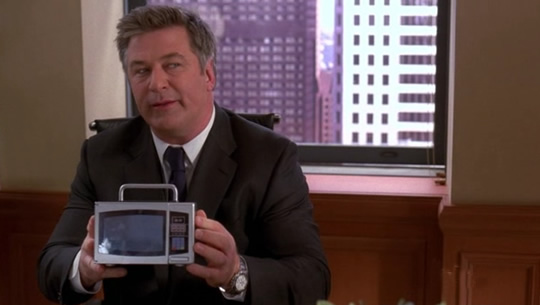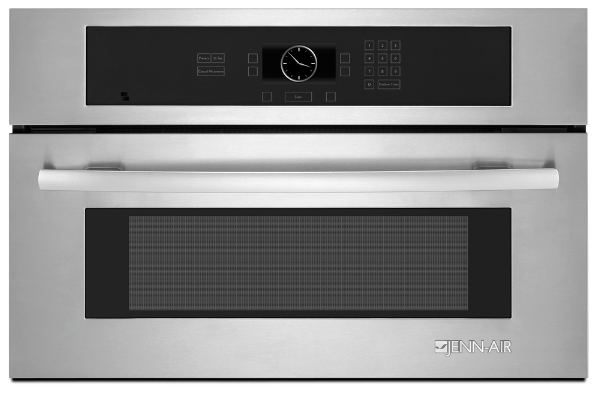Mental Model: Situational Knowledge
Last night, I was talking with Aaron about the situational knowledge mental model and its implication for business innovation. For those of you who aren’t familiar with it, situational knowledge is a type of experience-based knowledge that arises either organically or through training, creating a database of relevant facts and implicit understandings about situations, people, or processes that you may not even be aware exists but that stands ready to be called upon at a moment’s notice. It is an evolutionary adaptation that allows us to increase chances of survival by behaving in efficient, optimal, or safer ways, integrating feedback from experience into our decisions. Situational knowledge can create certain efficiencies that make it more valuable than raw intelligence or manpower.
One of the more famous illustrations of the situational knowledge mental model is the “which direction is the bus going?” test. When the following image is shown to adults, a large percentage of the population thinks there isn’t enough information to make a determination. They will randomly guess or attempt to work out the answer by asking questions.

Show the same image to a group of kindergartners who are still learning to tie their shoes and almost all of them get it right instantly, often without appear to do much thinking. The answer: From the perspective of the person looking at the drawing, the bus is going left. You know because there is no door visible. The kindergartners see a bus and subconsciously think about getting on it. That is their day-to-day experience. They don’t see a way to get into the vehicle in the picture, so they know the door must be on the other side. If you can’t see the school bus door, the bus is facing left from your perspective. Even at 5 or 6 years old, the brain does these calculations in the background without a lot of conscious effort. It’s remarkable, really.
How Situational Knowledge Influences Business Decisions
Situational knowledge can give someone a significant competitive edge in business. Tap into your inner Jack Donaghy for a moment. Let’s think about microwave oven design.

The Fun Cooker™
Look at this online conversation thread that, at last count, had 572 posts, most of them lamenting the beeping sounds a microwave makes when you press the button because it wakes up their family in the middle of the night. If it is such a common problem for so many people, why hasn’t it been addressed? It’s low hanging fruit a smart manufacturer could use to grow market share.
The answer: There is a disparity in situational knowledge. The people designing microwaves and the people using microwaves in the United States are largely not the same folks.
[mainbodyad]For a person to get to the point they are in charge of designing, launching, and selling a microwave oven, they have to have a certain skill set that is going to put them toward the top of the household income distribution. You’re often talking about those with advanced engineering degrees, an MBA, or other skill sets that allow them to earn individual incomes far higher than a typical member of society. For example, median household income in the United States is around $52,000, and that consists of two adults working. Yet, a single engineer in the GE appliance division is paid roughly $73,000 per annum. Once you get to take over a team, your individual salary will range around $90,000 to $100,000. Even the interns are paid around $20 per hour.
Now, consider that probability and sociology data tells us that a person in this position is much more likely than the general population to 1.) be married, 2.) stay married, 3.) be with someone who also has a college degree and earns a lot of money. We’ve gone into the effects of assortative mating on income inequality that arose now that women are fully participating in the workforce so there’s no need to go into the numbers again. Suffice it to say, it is almost a sure thing that a majority of the people determining how the machine functions are part of a household unit that generates six-figures in cash every twelve months.
That’s relevant. Most families in that demographic have a certain standard of living. Let’s pick a major metropolitan area – we’ll go with Houston – and look at how the lives of those making the decisions might differ from the lives of those using the product.
The higher income, college-educated family might live in a house only slightly above average in terms of cost and size. Pulling up the real estate listings, here are two active properties I found with a few seconds of searching:

This is a fairly typical house in Houston that would be affordable for a college educated family in an economically successful field. The overall price tag depending on the neighborhood would be $300,000 to $400,000. This exact home is $325,000 and 4,651 square feet of living space.

The kitchen is its own self-contained room with food preparation area on one side …

… and a window designed for sitting-area table, fireplace, and desk on the other.
Meanwhile, across town, a working class family might live in an $80,000 house like this:

A working class house in a working class neighborhood …

… with a very different setup on the inside. The kitchen is actually in close proximity to the living room and hallway, with the bedrooms being within shouting distance so sound would travel.
There is a situational knowledge disparity happening because someone in the larger home, in the nicer neighborhood, probably never heard their family complain about the volume of the microwave buttons. It doesn’t cross their mind. It’s not relevant. Yet, it is an annoyance in the smaller, less affluent home. If you’re trying to sleep and you hear a ruckus coming from the kitchen, you’re going to be unhappy.
There is a situational knowledge disparity happening because the higher your income, the less likely you are to heat pre-packaged, processed food that requires reheating. You’re going to hear the microwave beep on fewer occasions. My family falls right into this stereotype. Craving a delicious apple pie? Roll out some dough, create the filling, and put it in the oven. In the mood for comfort food? Grab some fresh tomatoes, vegetables, cream, cheese, and other ingredients to make stuffed ravioli from scratch. Have some extra spinach sitting in the refrigerator? Turn it into a green pasta with Parmesan and butter. Want to make a sandwich? Bake some bread. The microwave is a rarity that has only a few, specific uses in a few, specific circumstances. I can count on my hands the number of times I use in a microwave in any given month, and often it’s not to reheat food but to accelerate something else I’m cooking (e.g., melt butter as a time saver when simultaneously making four or five different recipes to test them).
[mainbodyad]There is a situational knowledge disparity happening because the higher income families aren’t buying the same microwaves as the lower income families. On the comparably rare occasion they do use a microwave, your typical affluent home might have a model from a specialty company such as Wolf, Miele, KitchenAid, Jenn-Air, General Electric, or Bosch that costs $400 to $1,500, has a variety of programmable options including sound mute, and blends into the cabinetry or is mounted over an oven range. It will be engineered to perfection and, short of an electrical problem in the house, should last decades. Some of them are straight out of Star Trek, with fully functioning on-board computers and auto sensors to determine the optimal fluctuation in power levels to cook the food just right as well as the ability to steam food much like a traditional couscoussier over fire could.

In contrast, a working class home is more likely to have a microwave from Wal-Mart that was manufactured under a brand name like Magic Chef, West Bend, Hamilton Beach, Sunbeam, Emerson, or Oster. These range in price from $49 to $189, are made of much cheaper components (some of which will probably eventually fail due to planned or effective obsolescence) and are missing a lot of capabilities due to building the model to a specific price point rather than to a specific function level. They almost always sit on top of something as they aren’t built into the kitchen itself.
Finally, there is a situational knowledge disparity happening because some models targeted to the lower classes do include a mute functionality, but the general intelligence level of the people designing the microwaves is higher than the population as a whole so they didn’t build an easy silence button on the front that intuitive tells you, “Press Me and I’ll Stop Making Noise”. Instead, given how comfortable they are with machinery, the engineers and executives built keyboard shortcuts that allow the person to input commands by pushing certain combinations of buttons, all of which is spelled out in the manual (that a lot of people won’t bother reading). This lowered costs and, in their mind, was still very simple because they are the type of people to read the instructions.
To get around the situational knowledge barrier, it’s important for businesses to use a variety of tools. Consumer surveys, in-home observations, and focus groups are among the more commonly used defenses. On a personal level, you can avoid a lot of it by training yourself to always check your assumptions, including asking yourself if you are experiencing the world differently from your target client or customer. You have to find a way to escape the bubble that surrounds you. I don’t think it is an accident some of the most successful business leaders in history lived like common folks for much of their lives. Sam Walton knew how to sell to the masses because he was born from, and lived among, the masses. So did Dave Thomas. So did Mary Kay. So did Rose Blumkin. There is a strategic advantage in counting yourself among the customer group that you are trying to capture as you know their needs and wants because they are your needs and wants, too.
It’s important because failure to recognize the reality of the consumer has resulted in a lot of otherwise good businesses ultimately missing huge opportunities or, worse, sliding into economic oblivion. You have to try and put yourself in the place of the person who will be making the purchasing decision for whatever it is you are trying to sell them. You need to appeal to their wants and needs; adapt your product or service to their preferred process, even if it seems unthinkable to you. Exceptions exist – as Steve Jobs famously said, Apple wouldn’t be Apple if he waited for the consumer to tell him what they wanted because they don’t know – but those are just that: Exceptions.


